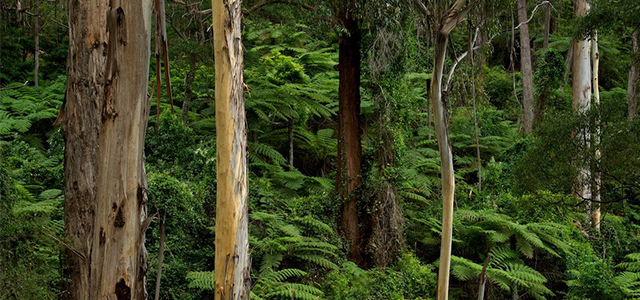Review: Understorey
“Never after the South East Forests campaigns can you say that a natural environmental protection issue wasn’t absolutely mainstream to the Australian psyche.” – Professor A.J. Brown
Understorey is a timely documentary as the Regional Forest Agreements which govern forestry in the area expire in 2019 and 2021. An alliance of conservation groups is now advancing a Great Southern Forest proposal. This involves funding jobs in tourism, wildlife protection, forest restoration and climate change mitigation from carbon credits, instead of loss-making logging-based forest management.
The Franklin River campaign looms large in Australian environmental movement history. Less well known but just as deserving of attention are the extraordinary decades-long campaigns to protect the biodiverse rich, internationally significant forests of southeast New South Wales.
Some 20 years after the South East Forests National Park was gazetted, documentary maker, Tathra resident and Uniting Church member, David Gallan, presents Understorey. This film traverses the rise of a large scale social movement, which grew from humble beginnings and a few dedicated conservationists in the 1960s through to its peak in the 1980s and 1990s. Wood chipping for export to Japan first commenced in the 1970s. It then expanded into the Tantawangalo and Coolangubra forests and prompted widespread opposition.
The film is an education. It highlights the centrality of local communities in environmental protection, the rights of traditional owners (the Yuin nation) and the diversity of tactics (court actions, tree sits, etc.) all needed to achieve campaign goals. There is also importance in the role of professional and citizen science in holding the forestry industry and governments to account, and the hankering of media after conflicts between opposing sides.
The story is told through interviews with many of the key players, interspersed with archival videos by Peter Constable and media reports. The personal testimonies of persistence over years, at times at great personal cost, are deeply moving. Gallan’s daytime and nighttime footage and stills of wildlife are delightful and contrast with confronting images of clear-felled wastelands.
The establishment of the South East Forests National Park is described by an interviewee as a “moderately successful outcome”. It consolidated a number of fragmented national parks and added significantly to their coverage. In the meantime, wood chipping, propped up by large government subsidies, continues in old growth forests outside the park boundaries.
Understorey will screen at Pitt Street Uniting Church on the 16th August at 7pm, followed by Q&A with David Gallan. For more information about the Great Southern Forest proposal, visit the official site.
Miriam Pepper
Published with permission. This review first appeared in the South Sydney Herald.






1 thought on “Forests of South East NSW still need protection”
As a professional forester for over 40-years I am saddened by the continuation of socially destructive and unnecessary conflict perpetuated by environmental activists who typically lack perspective and knowledge of what they are protesting about.
This so-called ‘Great Southern Forest’ proposal sounds like a re-run of the so-called ‘Great Forest National Park’ campaign that has been prosecuted by various ENGOs in Victoria since 2013 with the primary aim of destroying the Central Highlands/Gippsland timber industry. So, this is little more than a formulaic campaign which will ignore inconvenient truths so as to promote dubious, unproven increased benefits supposedly flowing from more tourism, carbon, etc..
In reality tourism and carbon benefits already accrue from the reserved forests and could be further enhanced with greater investment. Importantly, they are not contingent on the removal of the timber industry, and have successfully co-existed with it for decades.
In Victoria, the inconvenient truths were that most of the forests were already reserved and not available for timber production. Accordingly, forest biodiversity was not under undue threat, and co-exists with a timber industry which generates over $0.5 billion per annum and directly employs 2,500 with several thousand others also employed in downstream manufacture of hardwood products.
I don’t know the value of the timber industry in SE NSW, but I do know that the net harvestable area of forest comprises only about one-quarter of the total area of public forests. Accordingly three-quarters of the forests are already formally and informally reserved for biodiversity conservation. This means that the environment is not significantly threatened by harvesting and regeneration activities occurring in a minor portion of the region’s forests.
As per the Victorian campaign, the production of timber is described by this article as ‘loss-making’ even though this is far from the truth. Furthermore the article mentions that there is continued logging of old growth forests despite the reality that there has been no old growth logging in NSW public forests since 2004. I expect that these untruths are just a couple of many which will be misrepresented as fact in the film promoted by this article.